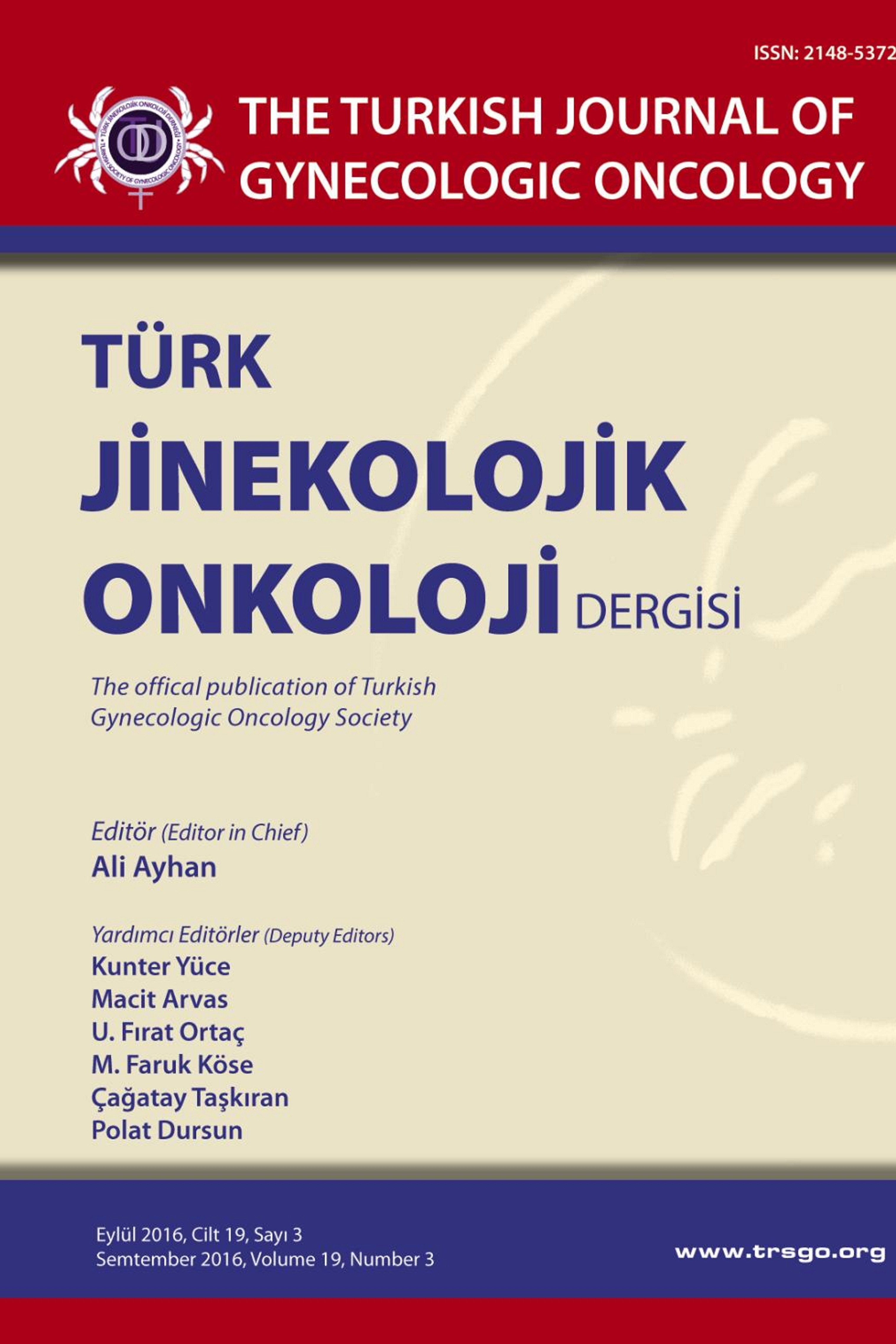2005-2009 YILLARI ARASINDA MOLAR GEBELİK NEDENİYLE TEDAVİ OLAN HASTALARIN TAKİBİ VE DEĞERLENDİRİLMESİ
Amaç: Kadın Hastalıkları ve Doğum Kliniğinde molar gebelik nedeniyle tedavi gören hastaların risk faktörleri, tedavi yöntemi, b hCG düzeyi ve gestasyonel trofoblastik hastalık geçirdikten sonra fertilite durumlarını araştırmayı amaçladık. Materyal ve Metod: Kadın Hastalıkları servisinde Ocak 2005 – Temmuz 2009 tarihleri arasında molar gebelik nedeniyle tedavi gören hastalar çalışmaya dahil edilmiştir. Hastalar yaş, gravide, parite, gebelik haftası, geçirilmiş molar gebelik öyküsü, eğitim durumu, sosyoekonomik düzey, akraba evliliği, tedavi yöntemi, b-hCG düzeyi (molar gebelik tespit edildiği zaman, tedaviden 1 hafta ve 1ay sonra, b-hCG negatişeşmesi), molar gebelik sonrası gelişen gebelik kriterlerine göre değerlendirildi. Bulgular: Patolojik sonuçları incelendiğinde; 60 hastada, 15 (%25.0) hasta parsiyel mol hidatiformla, 41 (%68.3) hasta komplet mol hidatiformla, 4 (%6.7) hasta invazif mol ile uyumlu idi, koryokarsinoma ile uyumlu olguya rastlanmadı. Olguların 23’ünde (%38.3) molar gebelik sonrası gebelik oluşmuştur. Kliniğimizde hastaların tedavisinde tercih edilen tedavi yöntemi genel anestezi altında “suction küretaj” olmuştur. Paritesini tamamlamış olan 6 hastaya histerektomi uygulanmıştır. 5 hasta da b-hCG düzeyleri takip süresinde tekrar yükselmesi üzerine metotreksat ile tedavi edilmiştir. b-hCG‘nin negatişeşmeşi ortalama 83 günde olmuştur. Bu çalışmada, tedavi sonrası serum b-hCG düzeylerinin normale iniş süresi ortalamalarının parsiyel hidatiform mol grubunda 82.66±11.8 gün, komplet hidatiform grubunda 72.32±3.3 gün, invazif hidatiform mol grubunda 200±18.3 gün olduğu tespit edildi (p<0,05). Sonuç: Etyolojisi tam olarak netleşmemiş bu durum karşısında elimizdeki tek seçenek, etkili aile planlaması yöntemleri ile toplumun tüm katmanlarına ulaşabilmiş bir takip protokolünün yaygınlaş- tırılması gibi görünmektedir
Aim: The aim of this retrospective study was to analyze the clinica characteristics, risk factors, therapy modalities, b-hCG levels and future fertility outcomes of patients who were treated fo rmolar pregnancy in our clinic. Material and Method: The patients diagnosed as gestational trophoblastic disease between 2005-2010 was evaluated retrospectively. Patients’ age, gravidity, parity, gestational age, previous history of mole hydatiforme, education level, socio-economic status, family history, treatment method, b-hCG level (when the molar pregnancy is detected, 1 week and 1 month after treatment, b-hCG negativity time), were noted and evaluated accordingly. F›ndings: Out of 60 patients, 15 (25%) patients had partial mole, 41(68.3%) had complete mole and 4 (6.7%) had invasive mole. We did not encountered choriocarcinoma in our series. After the treatment, 23 patients became pregnant during follow up. Suction curettage under general anesthesia was the preferred method of treatment in our series. 6 patients who have completed their reproductivity were treated with hysterectomy. An increase in b-hCG levels in the follow-up period in 5 patients were treated with methotrexate regimen. The return of serum b-hCG levels to negative after treatment was within 82.66 ± 11.8 days in partial hydatidiform mole, 72.32 ± 3.3 days in complete hydatidiform mole group and 200 ± 18.3 days in invasive hydatidiform mole group (p <0.05). Conclusion: It seems as if the only option in our hand is effective family planning and follow up protocol for this condition.
